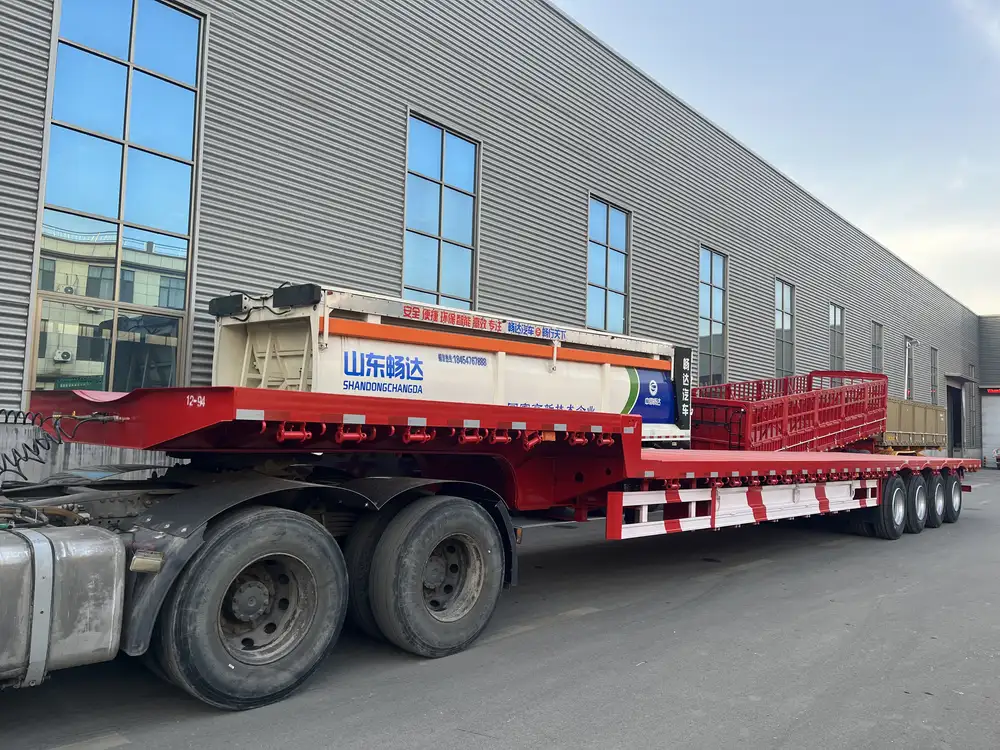In the world of logistics and transportation, the dimensions and configurations of parking spaces for semi trucks and trailers are often overlooked, yet they play a vital role in the efficiency of freight handling operations. This article will delve into the standards, variations, and best practices concerning parking spaces, ensuring your understanding is as robust and detailed as the semi trucks themselves.
Overview of Semi Truck and Trailer Dimensions
Let’s start by establishing the baseline dimensions for semi trucks and trailers, as these will inform the parking space requirements.
| Type | Length | Width | Height |
|---|---|---|---|
| Standard Semi Truck | 70-80 feet (21-24 meters) | 8.5 feet (2.6 meters) | 13.5 feet (4.1 meters) |
| Typical Trailer | 48-53 feet (14.6-16.2 meters) | 8.5 feet (2.6 meters) | 13.5 feet (4.1 meters) |
Common Types of Trailers
- Reefer Trailers: Insulated trailers for temperature-sensitive goods.
- Flatbed Trailers: Open trailers suited for heavy or oversized loads.
- Tanker Trailers: Designed for transporting liquid goods.
- Dry Van Trailers: Most common type, enclosed and secured.
Each type of trailer requires specific consideration in parking space design due to variances in operational use and loading practices.

Standard Parking Space Requirements: The Basics
Understanding how long a semi truck and trailer parking space should be is crucial for both fleet operators and freight terminals. The minimum parking space dimensions are often derived from the overall vehicle dimensions:
- Length: A standard parking space for a semi truck and trailer typically measures between 70 to 80 feet (approximately 21 to 24 meters) to accommodate the full length of the vehicle without overhang.
- Width: A width of 12 to 14 feet (approximately 3.6 to 4.3 meters) is recommended for easy access and maneuverability.
- Height Clearance: Generally, a vertical clearance of 14 feet (approximately 4.3 meters) will suffice in most instances.
Example Dimensions for Different Scenarios
| Scenario | Length (feet) | Width (feet) | Height Clearance (feet) |
|---|---|---|---|
| Standard Truck and Trailer Parking | 70-80 | 12-14 | 14 |
| Reefer Trailer Parking | 75-80 | 12-14 | 14 |
| Flatbed Truck Parking | 70-80 | 12-14 | 14 |
| Long Combination Vehicle (LCV) Parking | 90-100 | 12-14 | 14 |
These dimensions not only facilitate safe parking but also allow drivers to exit their vehicles comfortably.
Factors Influencing Parking Space Dimensions

Local Regulations and Standards
Local zoning laws and regulations often dictate the parking space sizes. In urban settings, you may encounter more stringent regulations given the higher density of traffic and potential for congestion. It’s essential to comply with municipal standards to avoid penalties.
Type of Facility
- Freight Terminals: Require larger spaces due to higher volumes and more extensive maneuvering requirements.
- Service Stations: May require smaller spaces if they cater specifically to quick stopovers rather than extensive loading/unloading operations.
Maneuverability Requirements
In addition to standard dimensions, it is crucial to consider the turning radius and maneuverability. Trailers need ample space to maneuver, especially in tight loading docks or crowded parking lots.
- Turning Radius: A semi truck requires a radius of about 55 feet (16.8 meters) to make a 90-degree turn safely.

Driver Experience and Comfort
The space must accommodate not only the vehicle but also the driver’s ability to reposition or exit the vehicle safely. A well-designed parking area should include safety features like:
- Lighting: Adequate illumination to enhance visibility at night.
- Clearance Markings: Painted lines and signs to guide truck drivers directly to their parking spots.
- Safe Access Routes: Clear pathways to and from exit points to prevent traffic accidents.
Optimizing Semi Truck and Trailer Parking
Strategic Layout Planning
Efficiently designed layouts can maximize the usability of a parking area. Options include:
- Angled Parking: Allows for more vehicles to fit within a confined area, improving efficiency.
- Double-Stacked Parking: While riskier, it can optimize space. Be cautious and ensure safety measures are in place.

Utilizing Technology
Incorporating technology can significantly enhance parking space management. Consider the following advancements:
- Smart Parking Solutions: Applications that provide real-time space availability.
- GPS and Parking Sensors: Aid drivers by providing guidance on the best approach to parking.
Environmental Considerations
Consideration for the environment is gaining traction, especially in the logistics industry:
- Paving Materials: Employ permeable materials for drainage.
- Green Spaces: Integrate greenery into parking designs to mitigate the environmental impact.
Conclusion
Parking spaces for semi trucks and trailers require meticulous consideration, balancing the dimensions of vehicles with safety and comfort. Understanding industry standards, local regulations, and best practices can help businesses design efficient, safe, and compliant parking areas.

Takeaway Points
- Space Length: Usually ranges from 70 to 80 feet to accommodate a variety of trailers.
- Width and Height: Maintain a minimum width of 12 to 14 feet and height clearance of 14 feet.
- Future Considerations: Stay informed about evolving regulations, environmental needs, and technological advances to optimize truck and trailer parking spaces.
FAQs
1. What is the minimum size of a semi truck and trailer parking space?
The minimum size is generally 70 feet in length and 12 feet in width.
2. Are parking dimensions the same for all types of trailers?
While many dimensions are standard, specific trailer types like tankers or reefers may have slightly different requirements.
3. How can I optimize my parking space effectively?
Utilize strategic layout planning, incorporate technology, and be mindful of environmental considerations to enhance space management.
Understanding these dynamics not only saves time and increases productivity but also ensures that drivers feel at ease when navigating these essential logistics facilities. Armed with this knowledge, you are better prepared to create parking solutions that cater effectively to the needs of the modern transportation industry.



